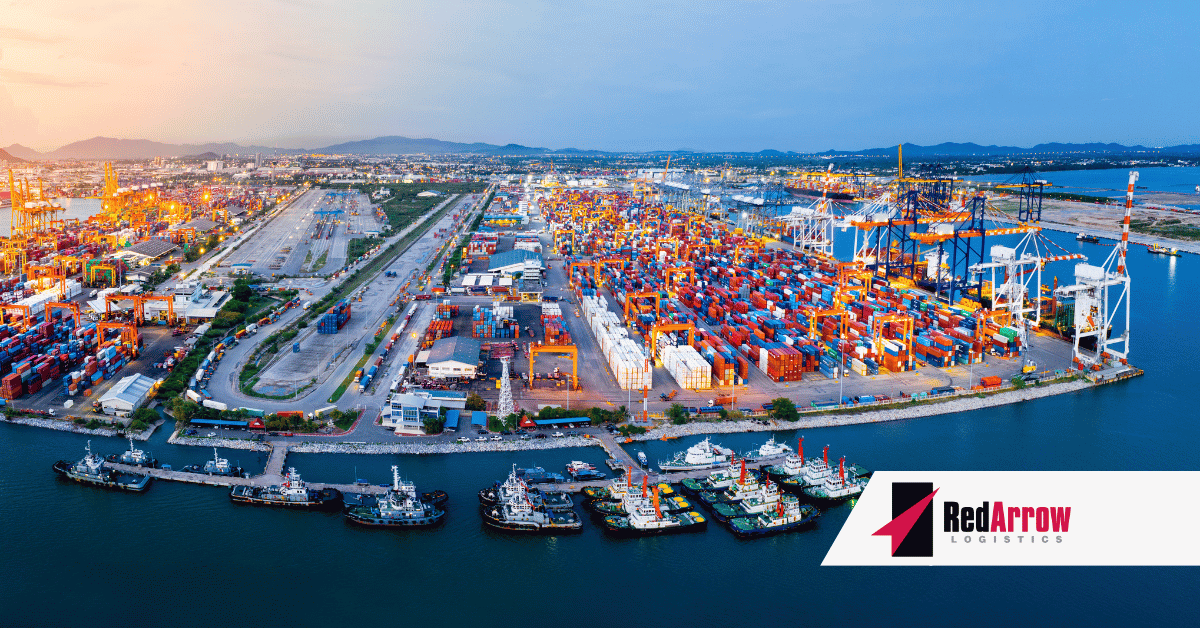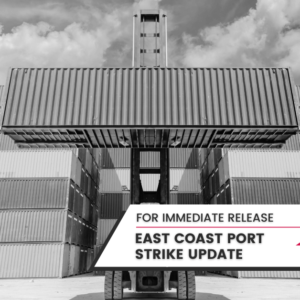As the global supply chain grapples with unpredictable challenges, logistics companies and shippers must prepare for potential disruptions. One looming concern is the potential strike by the International Longshoremen’s Association (ILA), which could occur if a new contract is not secured by October 1st. With ports along the East and Gulf Coasts at risk of a work stoppage, businesses across North America must brace for the potential ripple effects on the supply chain, especially as peak shipping season kicks into high gear.
Record-Breaking Activity at the New York-New Jersey Port
In July 2024, the Port of New York-New Jersey experienced its busiest month ever, processing over 800,000 twenty-foot equivalent units (TEUs) of inbound containers. This represents an 11% increase over July 2023 and a 14% increase from June 2024. Many shippers moved early on back-to-school and holiday inventory to avoid delays, reflecting growing concerns over global supply chain disruptions.
The New York-New Jersey port has established itself as the second-busiest port in the U.S. for loaded cargo, following the Ports of Los Angeles-Long Beach. This increased activity is a clear indication of how important East Coast ports are to the smooth functioning of the supply chain. But with a potential strike on the horizon, the question remains: how will businesses manage if operations come to a halt?
Why Shippers Are Worried
Shippers are already feeling the pressure from various global factors, including attacks in the Red Sea and uncertainty surrounding contract negotiations with the ILA. The possibility of a strike couldn’t come at a worse time—freight volumes are expected to increase in the fourth quarter as imports from China flood in for the holiday season.
For businesses dependent on timely deliveries, a work stoppage at key ports could have severe consequences, including:
- Delays in order fulfillment: With fewer workers to unload containers, backlogs will grow, leading to delays in receiving critical inventory.
- Increased costs: With limited availability at affected ports, alternative shipping routes and methods may come at a premium.
- Supply chain bottlenecks: A strike could cause significant congestion at other ports as shippers scramble to reroute their cargo, overwhelming an already strained system.
How Red Arrow Logistics Can Help
At Red Arrow Logistics, we understand how vital a seamless supply chain is for your business. Our team is prepared to help you navigate potential disruptions with strategic solutions, including:
- Flexible shipping options: We work closely with our network of partners to identify alternative routes and methods to keep your shipments moving, even if key ports are affected.
- Real-time tracking and updates: Our technology gives you full visibility into your shipments so you can make informed decisions if delays occur.
- Inventory management support: By helping you anticipate potential bottlenecks, we assist in optimizing your inventory levels, ensuring you’re prepared for any scenario.
Planning Ahead
With the potential ILA strike looming, preparation is key. Whether it’s adjusting shipment schedules, diversifying supply chains, or exploring alternative ports, having a robust contingency plan is essential to minimizing the impact on your business. Red Arrow Logistics is here to provide the expertise and support you need during these uncertain times.
Stay ahead of the game—contact Red Arrow Logistics today to ensure your business remains resilient in the face of supply chain challenges. Our team is here to assist you in navigating these challenges. If we can be of assistance, please email us at info@redarrowlogistics.com or give us a call at 425-747-7914.
Best regards,




